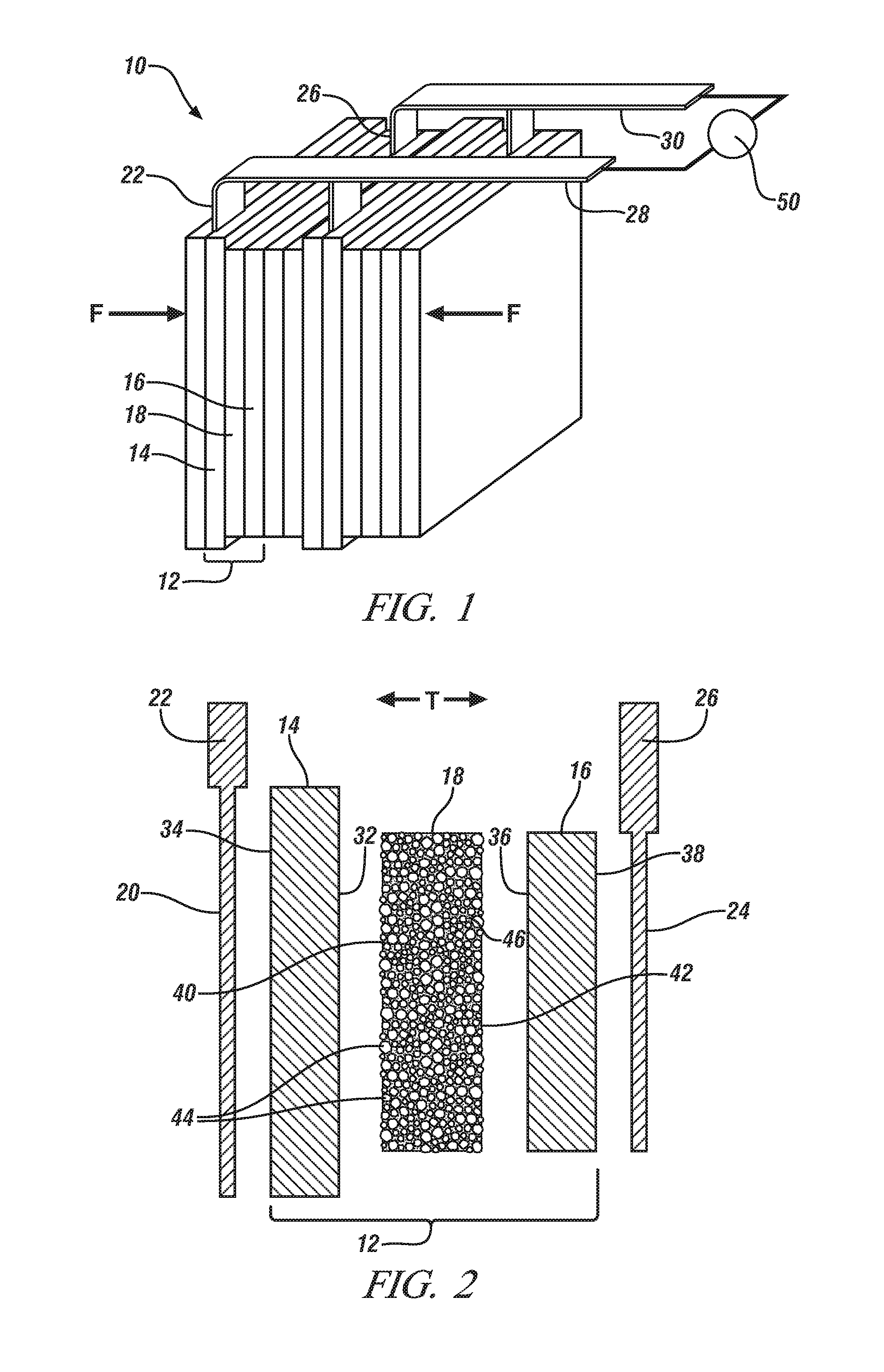Separators for a lithium ion battery
a lithium ion battery and separator technology, applied in the direction of cell components, cell component details, electrochemical generators, etc., can solve the problems of not sacrificing lithium ion conductivity at normal or elevated temperatures, and achieve the effect of robust thermal stability and easy passage of pore openings
- Summary
- Abstract
- Description
- Claims
- Application Information
AI Technical Summary
Benefits of technology
Problems solved by technology
Method used
Image
Examples
example
[0041]This Example demonstrates the ionic conductivity, electrochemical cell cycle performance, and thermal stability of a separator comprised predominantly of heat resistant-particles, as described above, in comparison to a conventional monolayer polypropylene lithium ion battery separator obtained from Celgard, LLC (Charlotte, N.C.). The separator comprised predominantly of the heat-resistant particles is referred to in the remainder of this Example as the “inventive separator” for brevity.
[0042]The inventive separator was formed by a phase separation process, as described above. To begin, alumina particles having a diameter of 1 μm were dispersed in dimethylforamide (DMF). The dispersion of alumina particles was then spread on a glass plate using a doctor blade. The glass plate was placed in an oven set at 80° C. and the DMF was evaporated to form a layer of the alumina particles. A polymer solution that contained 5 wt. % polyvinyldiene fluoride (PVdF) dissolved in a miscible sol...
PUM
| Property | Measurement | Unit |
|---|---|---|
| thickness | aaaaa | aaaaa |
| diameters | aaaaa | aaaaa |
| diameters | aaaaa | aaaaa |
Abstract
Description
Claims
Application Information
 Login to View More
Login to View More - R&D
- Intellectual Property
- Life Sciences
- Materials
- Tech Scout
- Unparalleled Data Quality
- Higher Quality Content
- 60% Fewer Hallucinations
Browse by: Latest US Patents, China's latest patents, Technical Efficacy Thesaurus, Application Domain, Technology Topic, Popular Technical Reports.
© 2025 PatSnap. All rights reserved.Legal|Privacy policy|Modern Slavery Act Transparency Statement|Sitemap|About US| Contact US: help@patsnap.com



